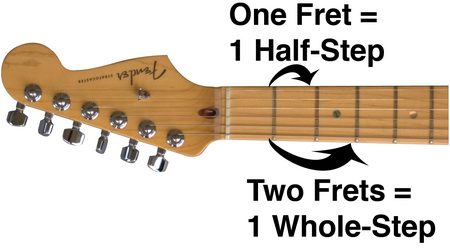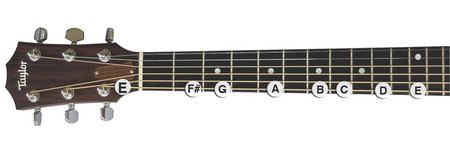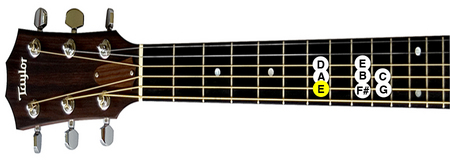Minor Scales
A Primer For Guitarists
Before you learn about minor scales, I encourage you to understand the basics of Scale Theory. In fact, most people also learn about Major Scales before before conquering the minor version. If you haven't read those two articles, yet, I encourage you to do so before continuing.
Learning about minor scales is another important step all guitarists should take on the road to improved musicianship.
Another Very Quick Review
The introduction to Scale Theory taught that a scale is an orderly series of notes, and that a chromatic scale is a series of twelve half-steps (thirteen when you include the octave). Also, a tetrachord is a building block of notes, built upon whole and half-steps. For minor chords it is a four note series that is built from a starting note (the root, or tonic), plus a note one whole-step away, then a note one half-step away, and finally a note one whole-step away. You need to understand that a whole-step is the same as two half-steps.
On the guitar, a half-step is always equal to a change of one fret. One whole step is always equal to a change of two frets.
 |
Applying these concepts, you could built a minor tetrachord, beginning from a C, note as follows:
C D Eb F
W h W
|-minor tetrachord-|
Note: Eb is pronounced E-flat.
Building Minor Tetrachords Into Minor Scales
Once you understand how to construct a minor tetrachord, it's a simple matter to build any minor chord you like. Simply:
- Build a minor tetrachord beginning with the root (sometimes called the tonic) of the chord you're building...
- Build a second minor tetrachord, beginning with the last note of the first minor tetrachord, joining the two tetrachords together.
- Add one whole-step note to complete the scale
For example, suppose you wanted to build the C-Minor scale. C is the root, or tonic note, that will begin the first minor tetrachord. We've already built this first tetrachord in the example at the end of the Quick Review. It looks like this:
C D Eb F
W h W
|-minor tetrachord 1-|
The second step says we need to build a second minor tetrachord, beginning with the last note of the first (an F in this example). Here is the second minor tetrachord:
F G Ab Bb
W h W
|-tetrachord 2-|
The final step is to merge the two tetrachords together and add a whole-step at the end, as shown below:
C D Eb F G Ab Bb C
W h W W h W W
|-tetrachord 1-|-tetrachord 2 -| w-s |
The C-minor Scale
This same method works for constructing any minor scale. Here are two more examples, G minor and E minor.
G A Bb C D Eb F G
W h W W h W W
|-tetrachord 1-|-tetrachord 2 -| w-s |
The G-minor Scale
E F# G A B C D E
W h W W h W W
|-tetrachord 1-|-tetrachord 2 -| w-s |
The E-minor Scale
Note: F# is used (rather than Gb) to avoid using the same note name twice in a row. You could write the scale with Gb, but it's considered poor form.
If you follow this four step method, you can construct any minor scale.
Playing A Minor Scale Up The Fretboard
As with the examples on the Major Scale page, we'll begin by playing a minor scale up the fretboard, then play it across the fretboard.
The illustration below uses the lower-E string, but you can play the high E string if it's more comfortable for you.
The E-minor scale, as seen in the tetrachord construction, above consists of the notes E F# G A B C and D. Most people expect you to complete the scale by ending on the note one octave higher than the first note of the scale (in this case, E).
The first note of the scale, E is played by plucking the open string. The next note (F#) is a whole-step, or two frets, above this. Simply continue one-fret, then two-frets, then two, one, two, and finally, two-frets to end on the next E at the twelfth fret.
 |
Playing A Minor Scale Across The Fretboard
There are many ways to play the E-minor scale, or nearly any scale, across the fretboard, but most beginners will play the notes that are as close together as possible. You begin by locating an E note to act as your root. For this example, let's use the E on the fifth string (A) and the seventh fret. The root note is shown in yellow. Note: I've widened the fretboard to make the note names easier to read.
 |


